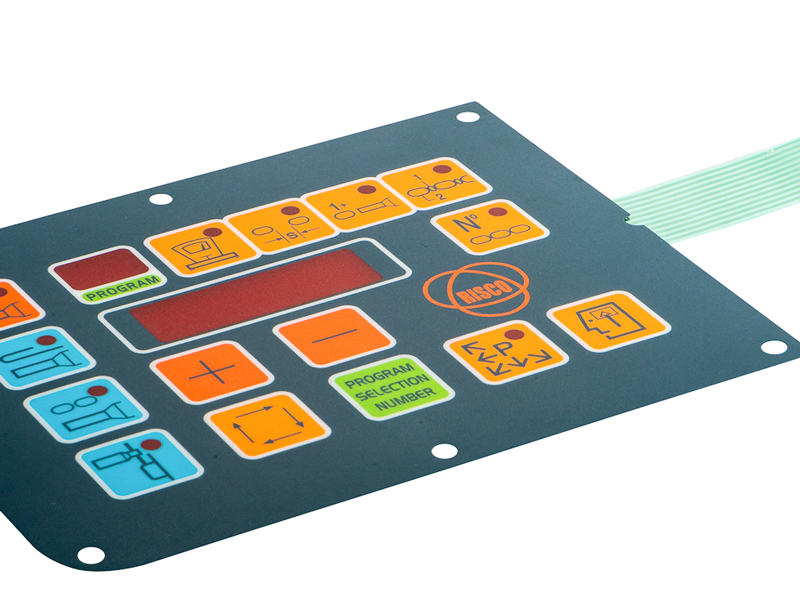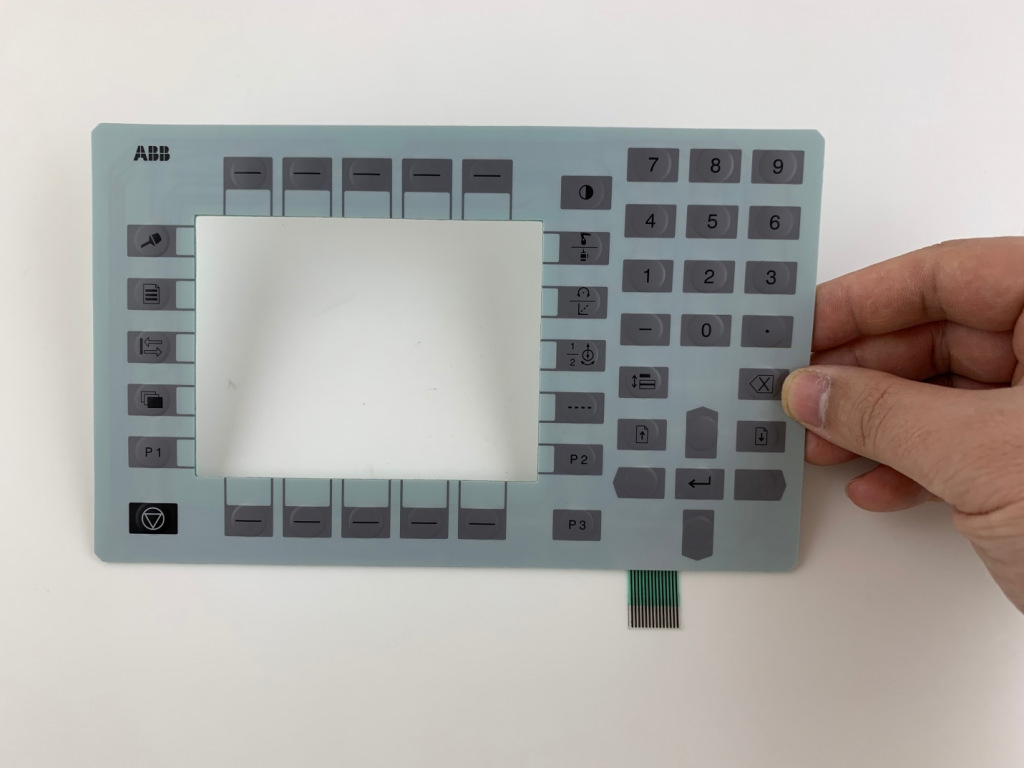A Comprehensive Guide to Membrane Switch Design and Manufacturing
The Benefits of Making Use Of Membrane Layer Switches Over in Consumer Electronics
Membrane layer switches are progressively recognized for their considerable benefits in consumer electronics, especially in boosting user interaction and streamlining manufacturing processes. The flexibility in style allows for tailored remedies that fulfill diverse customer needs.
Boosted User Experience
In today's competitive landscape of customer electronic devices, boosted customer experience is critical; virtually 85% of customers focus on instinctive interfaces. Membrane layer changes play a critical duty in accomplishing this degree of usability.
The responsive responses provided by membrane switches is necessary for directing individual actions, making certain that commands are signed up precisely. This comments device heightens and reduces mistakes user satisfaction, fostering a positive partnership in between the tool and the user. The adjustable nature of membrane switches allows suppliers to customize user interfaces to certain individual demands, making gadgets extra available and welcoming.
Additionally, membrane switches can integrate backlighting and visuals overlays, additionally improving exposure and use in varied settings. This flexibility guarantees that gadgets remain easy to use and functional, no matter of the setup. Overall, the assimilation of membrane layer switches into customer electronics dramatically improves individual experience, driving brand name commitment and fulfillment in an increasingly open market.
Affordable Production
Customer electronics producers are continuously looking for methods to stabilize high quality with price, and membrane buttons supply an engaging service for cost-efficient manufacturing. membrane switch. These elements are inherently simpler than standard mechanical buttons, which decreases both manufacturing expenses and complexity. The light-weight design of membrane layer switches allows for reduced shipping costs and easier assimilation right into small tools, further boosting their appeal in an open market

Suppliers can produce membrane switches in high volumes, capitalizing on economic situations of scale. This automation capability makes certain constant high quality while considerably reducing per-unit prices. Additionally, the products used in membrane buttons, such as polyester and polycarbonate, are frequently more economical than those needed for standard button innovations, adding to overall expense financial savings.
The manufacturing process for membrane layer changes normally needs less steps and less labor compared to various other switch types. This streamlined method not just saves money on labor expenses yet additionally accelerates time-to-market, allowing firms to respond swiftly to customer demand. Subsequently, the mix of decreased material costs and effective manufacturing procedures placements membrane layer switches over as a clever financial investment for makers aiming to supply premium consumer electronic devices at affordable rate points.
Style Versatility and Personalization
While typical mechanical buttons often enforce limitations on design because of their mass and called for installing mechanisms, membrane layer switches give unmatched flexibility and personalization choices for customer electronic devices. This ingenious innovation allows designers to develop smooth, inconspicuous interfaces that can perfectly integrate into different item looks, from smartphones to kitchen appliances.
Membrane layer switches can be generated in basically any kind of form or dimension, enabling manufacturers to check my source customize the format to particular ergonomic and functional needs. This versatility not just boosts user experience but likewise enables for artistic layouts that align with brand name identity. The use of published graphics on membrane layer switches offers the chance for complex styles and lively colors, which can be easily changed without considerable price implications.
Additionally, membrane buttons can incorporate numerous performances into a single layer, minimizing the need for several components and simplifying assembly procedures. This structured design approach minimizes space and weight, making it perfect for small consumer electronic devices. Generally, the design versatility and personalization abilities of membrane layer switches equip suppliers to innovate, ultimately bring about even more engaging and straightforward products.
Sturdiness and Dependability
As modern technology proceeds to advance, the durability and dependability of membrane buttons have become important factors to consider for makers in the customer electronic devices industry. Membrane layer buttons are designed to endure extreme environmental problems, consisting of temperature fluctuations, dampness, and dust exposure. Their robust building usually includes multi-layered materials that give an effective obstacle against impurities, ensuring longevity and consistent performance.
In enhancement to environmental resistance, membrane changes deal superior mechanical dependability. Unlike conventional mechanical switches, which might use out with time, membrane layer switches utilize a covered design that minimizes the risk of mechanical failing. The absence of moving components not just improves their lifespan this contact form yet likewise minimizes wear and tear, making them ideal for high-usage applications.
In addition, membrane switches can withstand a significant number of actuations without loss of functionality, typically exceeding millions of cycles (membrane switch). This durability translates to decrease substitute costs and decreased downtime for customers and makers alike. In general, the combination of ecological strength and mechanical integrity makes membrane layer switches a tactical selection for consumer electronics, ensuring that devices stay effective and functional throughout their intended lifespan

Streamlined Product Development
The longevity and integrity of membrane switches significantly add to structured product advancement in the customer electronics industry. By integrating these switches early in the style process, makers directory can reduce the intricacy and number of components called for in their products. Membrane switches are portable and light-weight, permitting a lot more efficient area application within gadgets, which can result in simplified assembly procedures.

The simplicity of manufacturing membrane switches also plays an essential function in product growth. With modern-day printing methods and products, production can be scaled effectively, reducing and reducing lead times waste. This leads to reduced production costs, improving overall earnings.

Final Thought
To conclude, membrane changes significantly enhance customer electronic devices by supplying an enhanced customer experience, affordable production processes, and flexible style options. Their durability and integrity make certain consistent efficiency in different environments, while structured product advancement helps with quicker time-to-market. These advantages collectively add to the advancement and performance of consumer devices, dealing with the evolving demands of users successfully. The combination of membrane layer changes stands for a calculated option for makers seeking to optimize product style and performance.
Membrane layer switches are increasingly identified for their substantial advantages in consumer electronic devices, specifically in improving individual interaction and simplifying production procedures. Additionally, the materials utilized in membrane layer buttons, such as polyester and polycarbonate, are frequently less expensive than those needed for traditional switch modern technologies, contributing to overall cost savings.
The manufacturing procedure for membrane switches over normally requires fewer actions and much less labor compared to other switch kinds. Unlike typical mechanical switches, which might wear out over time, membrane layer changes use a sealed design that minimizes the danger of mechanical failure.In conclusion, membrane layer switches dramatically boost customer electronic devices by giving an enhanced user experience, economical production procedures, and versatile style options.